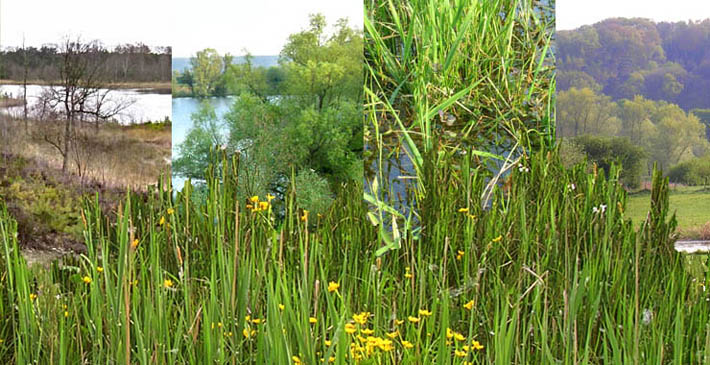Ecologicalstructure: Layering, zonation and life forms
Introduction
In order to characterize a biotope data about the soil properties, availability of water and nutrients are taken into account. To describe vegetations, terms like
layering,
zonation and
life forms serve to get an overview of the structure and composition of such a vegetation.

On speaks about
layering when a number of distinct layers can be pointed out in the vegetation, namely a pattern consisting of several levels (stacks) with a horizontal structure. This structure is mainly (but not exclusively!) found in a homogeneous environment, when ecological conditions over large surface differ little.
Zonation on the other side is a band-like pattern that often occurs where an ecological component (e.g. water availability) strongly varies over a short distance. A zonation has a marked vertical component. Both structures can occur next to each other in a vegetation. Furtheron the term
life form indicates to which type plants belong with regards to the limiting factor for survival: water, drought, temperatures below zero. The life form to which most plants from a community belong gives thus an idea about the kind of vegetation.
Coherency
The various layers in the vegetation of a "forest" life community can be considered as distinct "communities" or units. Each shows a certain composition of species, with own dominant species and structures. The species of each layer can belong to different
life forms. The same can happen for the fauna. Some birds may life preferably in the top layers, other mainly on the ground. The habitat of mice is mainly restrained to the herbaceous and moss layer and upper soil layer, whereas squirrels can be most found in the of the trees. The structure and the existance of the lower layers depends yet of the presence of the upper layer:
Example 1: it will be clear that the shrub layer in a wood is less dense according as the tree layer is more developped and thus captures more light; the flowering of shrubs in such underlayer will be restrained due to the presence of a dense upperlayer.
Example 2: Plants in the herbaceous layer with a high requirement of water (hygrophytes, e.g. ferns) are mostof the time able to manage to live in the average lower relative humidity outside the wood area. Opposite the dependence on the tree layer with respect to the presence of lower layers is less evident.
In botany another hierarchic classification system is used in which plant systems are ordered according to the rhater constant occurance of certain species tegether and key species. The most elemetary level with the most detailed defined species is called Association. More general and less precisely-defined are the Alliance, Formation, Group and then Class.







